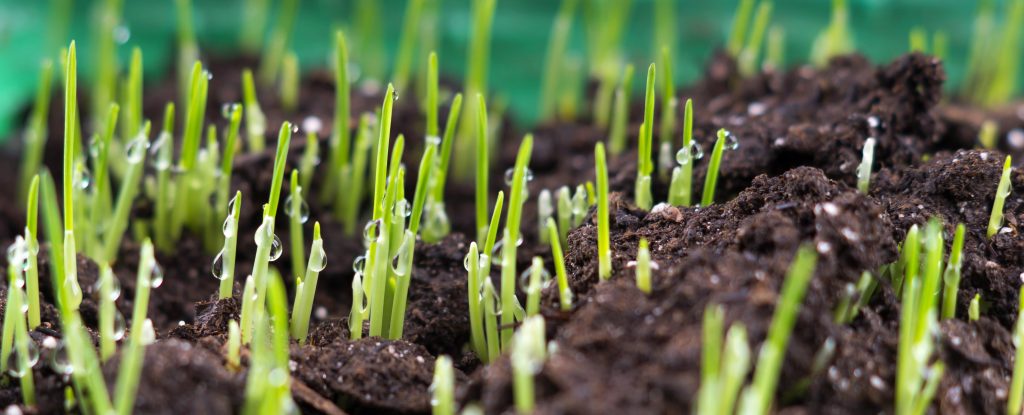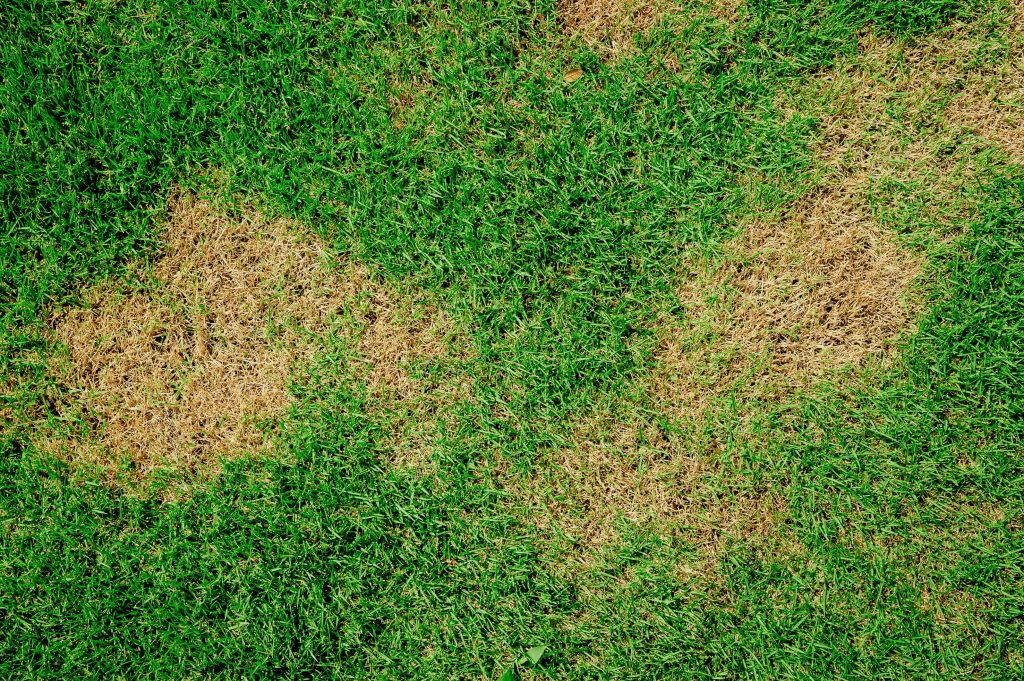If your grass is growing OK, but is a bit sparse, you might be wondering how to make it grow thicker and fuller.
In this guide, we’ve explained some techniques you can use to make your grass grow better, improve its thickness, and overcome any sparseness on your lawn.
We’ve ordered these tips based on effectiveness at making your lawn grow fuller, as well as how easy they are to do.
1. Ensure your lawn is getting plenty of nutrients
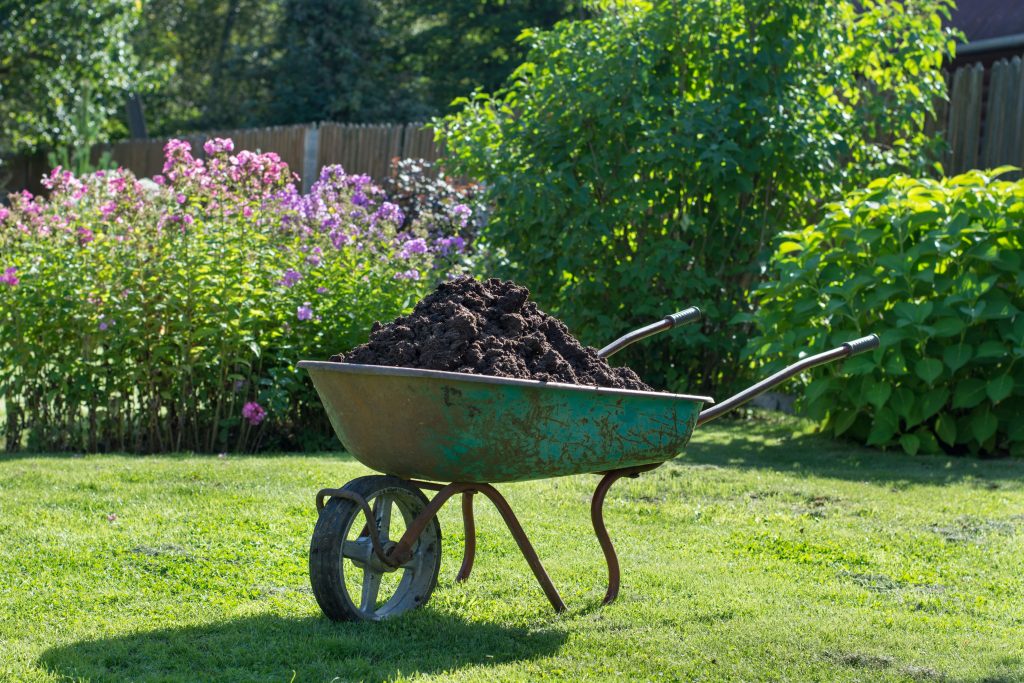
Just like you, your lawn needs food to grow strong. Therefore, it’s important to ensure that it’s getting plenty of nutrients.
There are two main ways to feed your lawn:
- Mulch your grass clippings when you mow the lawn. If you leave the clippings on your lawn, and ideally use a mulching mower to cut them as small as possible, they’ll decompose, and leave behind valuable nutrients to help your grass grow thicker. Just ensure not to leave too many clippings in place at any given time.
- Top dress your lawn with compost, or organic fertiliser. It’s good to do this every so often, especially if you’re not mulching your grass cuttings. And if you already have a habit of fertilising your lawn every year, try to do it more often – once in the spring, once or twice in the summer, and potentially once in the autumn as well, to make your grass growth more dense. Just be careful to avoid adding too much fertiliser, as this can burn your lawn.
You can also combine these methods, mulching clippings on a regular basis, and then top dressing your lawn once or twice a year. However, if it’s been a while, it’s a good idea to use some compost or fertiliser to help give your lawn a good feed.
2. Mow your lawn more regularly
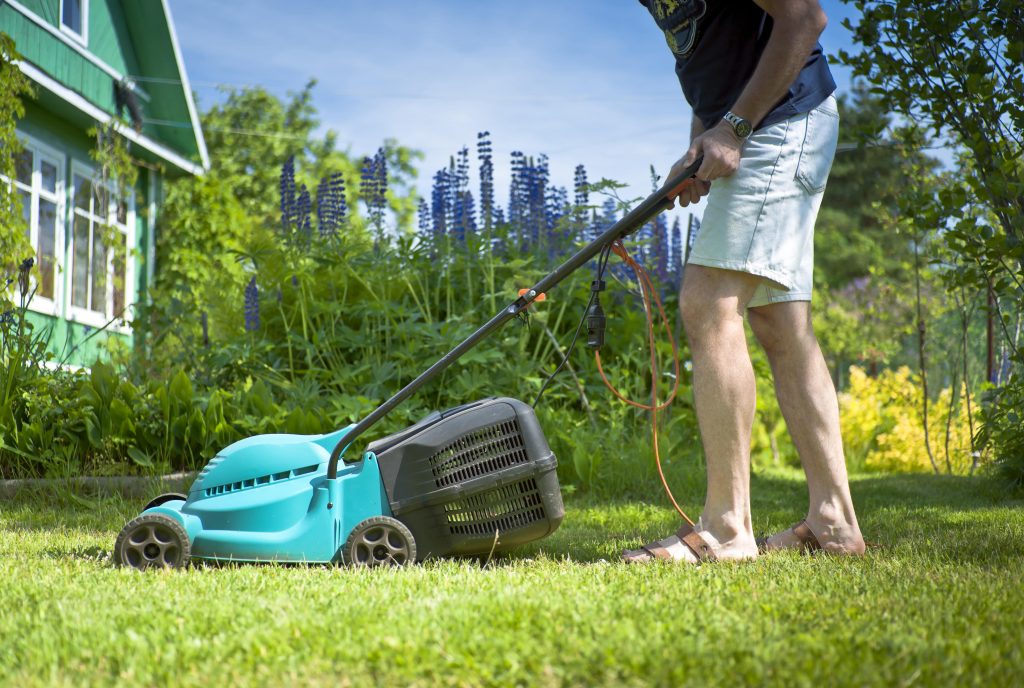
Mowing your lawn more regularly, and taking less off its height on each mow, is one of the best things you can do to make it grow thicker.
Keep your lawn about 2 inches tall, or slightly taller, and never take off more than 1/3 of the length of your grass each time you mow. And if you can, mow your lawn every week when it’s growing at its fastest.
This way, you’ll stimulate your lawn to grow denser – it will focus more on growing laterally, rather than vertically. Just ensure not to cut your lawn too short, or you risk scalping it, which will hinder its growth.
Also, ensure that your lawn mower blades are nice and sharp. If they’re not, you might be ripping or tearing the grass, rather than cutting it, which can increase the likelihood of diseases taking hold. This can also prevent the grass from growing as well as it should.
3. Check your soil
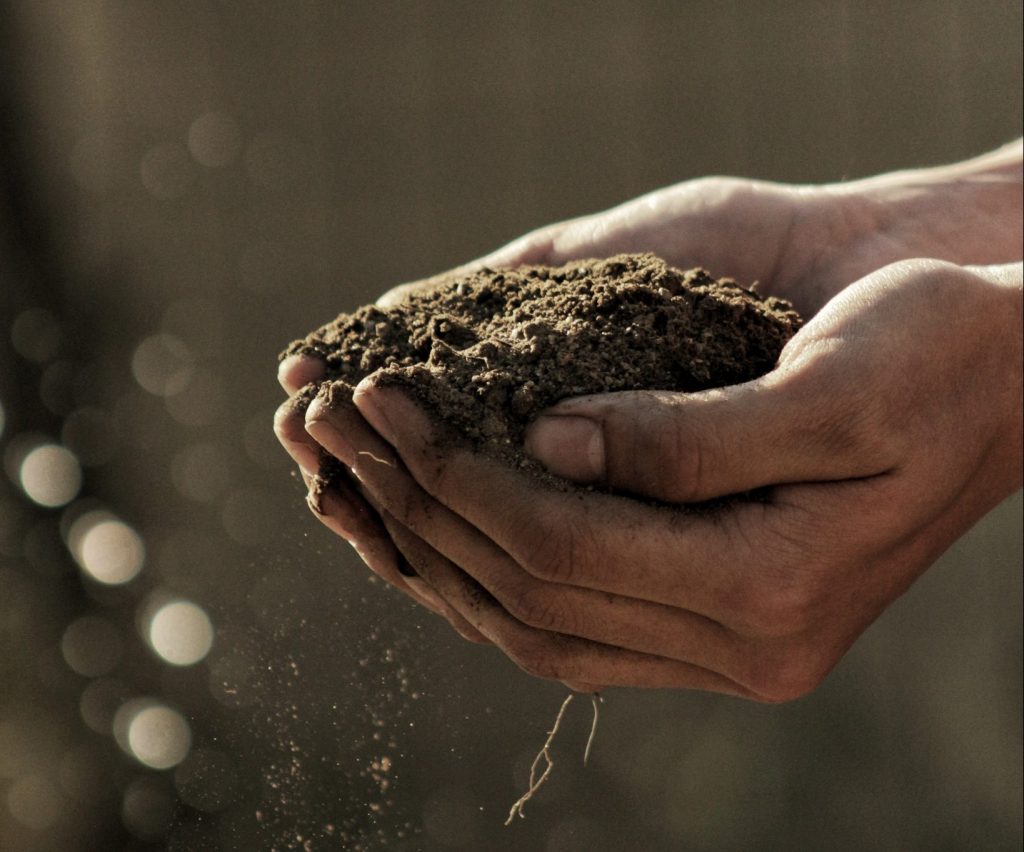
Poor quality soil can also prevent your lawn from growing as thick as it should. If the soil is too sandy or has too much clay for example, this can cause drainage issues, or result in nutrients leaching out of the soil too quickly.
There are a few things you can do to check and improve the health of your soil:
- Do a pH test, using a soil pH testing kit. The main thing to look for here is your soil being too acidic, with a pH that’s too low. When this occurs, diseases can take hold on your lawn, and your soil doesn’t have enough magnesium or calcium for your lawn to grow as well as it should. You want your pH to read around 7. If it’s too low, you can top dress your lawn with agricultural lime, to make the soil less acidic.
- Aerate your soil, to improve drainage. This is especially likely to help if you have soil with a high clay contact, particularly if it has become compacted. To do this, you can use a hollow tine aerator, aerator shoes (with spikes on them), or roller aerators, which are useful for larger lawns. Try to make a hole every 4cm or so, and don’t be afraid to leave lots of holes on your lawn. You can leave the plugs in place, and the soil will eventually wash back into the ground.
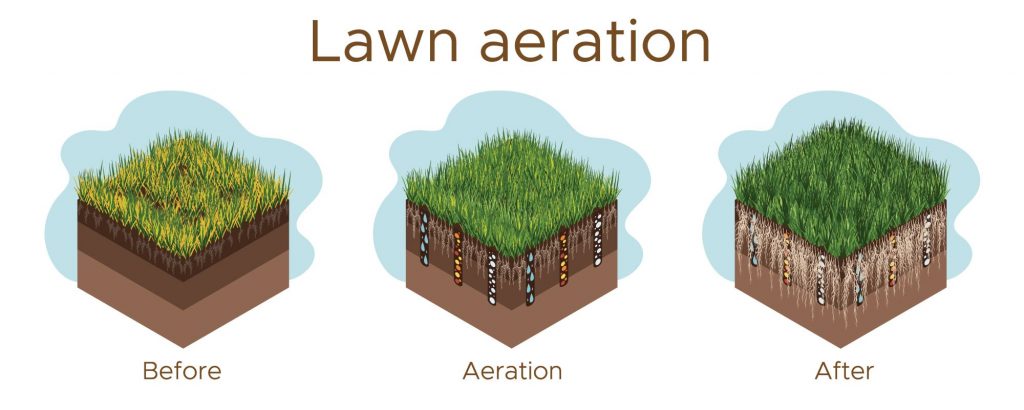
- Top dress the lawn with topsoil, if your soil quality isn’t very good. To test your soil quality, pick up some soil in your hand – is it nice and dark, and does it crumble in your fingers, rather than feel too sandy or sticky? You ideally want to have at least five inches of good quality top soil for your lawn to grow at its best, but don’t add too much at once when topdressing, otherwise you might block the sun from your lawn for too long.
4. Consider overseeding your lawn
A great way to make your lawn grow thicker is to overseed it – meaning, spread some more grass seeds on your lawn.
This technique is especially helpful if you also notice bare patches on your lawn, because it takes a long time for cool season grasses to spread to areas where grass has previously died.
To do this, you will need:
- Grass seeds. You might want to try and buy seeds that match the look of the ones already on your lawn. However, this isn’t essential – most seed bags contain a mixture of different seed types, and will look fine, unless you have an ornamental lawn.
- Something to spread the seeds with, especially if you have a large lawn. Read our guide to lawn spreaders to learn more about your options here. You can use your hands to spread grass seed, but it can be tricky to ensure an even spread.
In brief, here’s how you can overseed your lawn to make your grass grow thicker:
- Mow the lawn nice and short (about 2 inches), and collect your grass clippings.
- Scarify your lawn if there is a lot of thatch buildup. This helps your seeds to make their way down into the soil. Alternatively, clear as much debris as possible using a rake.
- Spread a small amount of compost or organic fertiliser on your lawn.
- Spread the seeds on your lawn, keeping in mind the packet instructions about how much seed to use.
- Water your lawn immediately, giving it a good soaking.
- Continue to water your lawn twice daily, and then once a day, once seedlings emerge from the ground. Ensure to keep off the lawn during this time.
- Wait for the grass to grow relatively tall, at least 2.5-3 inches, and then mow it. Your lawn should now be significantly thicker than it was before.
To learn more, read our guide to overseeding your lawn.
5. Dethatch your lawn
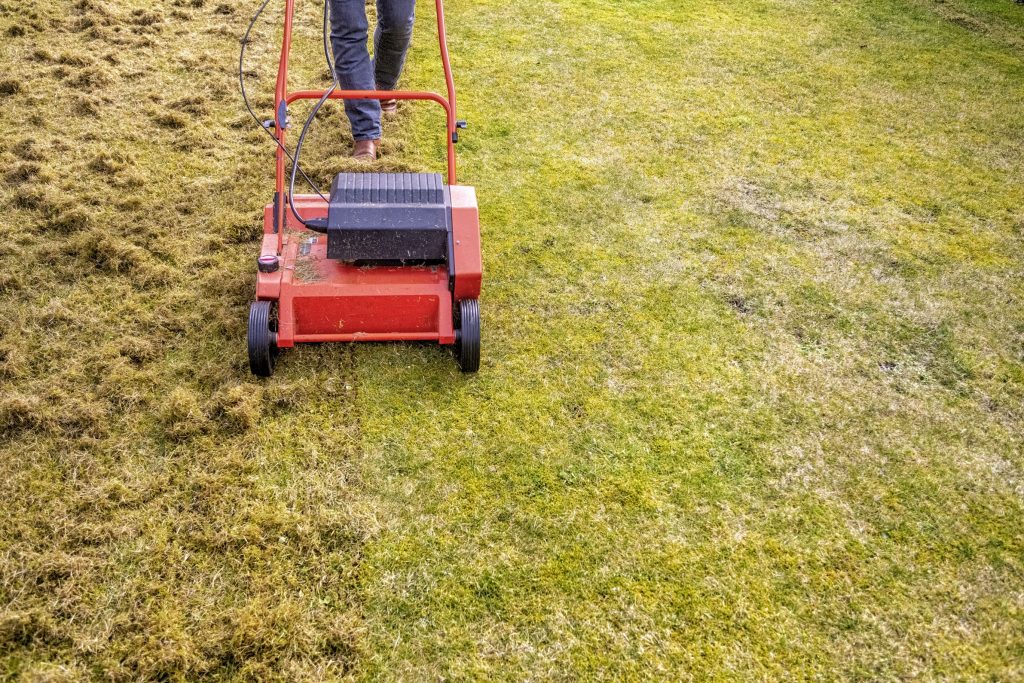
It’s normal to have a layer of thatch (decomposing organic matter) on your lawn. However, if there’s too much of it, this can prevent your lawn from growing nice and thick.
If you have more than half an inch of thatch, it’s a good idea to scarify your lawn. This will help to improve the amount of air and moisture that can reach the crown of each grass plant, as well as its root system, especially if you aerate the soil as well.
If possible, it’s best to buy or rent a proper lawn scarifier to get the job done. To learn more about this process, read our guide to scarifying your lawn.
6. Remove weeds from your lawn
Weeds can take up room on your lawn, preventing grass from growing nice and dense.
Sometimes weeds are hard to tell apart from your grass, in which case they might not be such an issue. But if your lawn is sparse because of weed growth, it can be helpful to pull them out.
There are a few different ways to repair a lawn full of weeds:
- Pull them out by hand, ensuring to get the entire plant, including its roots.
- Use a heat gun or blowtorch, burning each individual weed to a crisp, and being very careful not to scorch your lawn or start a grass fire.
- Use a targeted application of weedkiller on each weed. We generally recommend avoiding this if possible, not only because herbicides can kill valuable microorganisms in the soil, but also because you’ll want to pull out each weed individually after the weedkiller has killed it, meaning you’ll have to do the same or more work as pulling out each weed by hand.
At this point, you may want to reseed the areas that had weeds, to help the grass grow nice and thick.
7. Give your lawn more sunlight

Here in the UK, your lawn probably gets plenty of moisture, almost year-round. However, your lawn also needs a decent amount of sunlight in order to look its best.
One tell-tail sign that your lawn isn’t getting enough sunlight is moss growth, although moss also does well on lawns with poor drainage.
To give your lawn more sunlight, try to prune any overhanging tree branches, large bushes, or tall hedges, that block the sun’s rays. Try to focus on improving levels of sunlight to the most sparse areas of your lawn, especially if you notice that they spend much of the day in the shade, or notice moss growth.
Also, ensure to remove any debris that falls on your lawn, such as leaves in the autumn. Not only will leaves begin to decompose on your lawn, they will also block valuable sunlight, which can be a particular problem as the weather gets colder.
Conclusion
This is the end of our guide to making your lawn grow thicker and fuller.
Hopefully some of these tips will be helpful in improving the look of your lawn.
If you have any questions about any of these methods, please leave a comment below, and we’ll get back to you.

I’m Josh, and I’m the head writer at Lawn Care Pro.
I love everything lawns, but I’m a bit of a lawn mower nerd. I spend a lot of my free time tinkering with mowers, and planning my mowing schedule for the next few weeks.
I’m also into cars, which comes in very helpful when servicing a mower engine!

